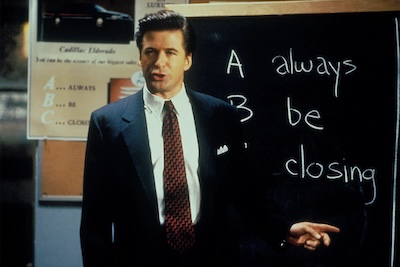The immediate familiarity you feel when you see Noah Wyle (as Dr. Robby) walk into the emergency center he leads, wearing scrubs and listening to the great old Robert Bradley track “Baby” is understandable. John Wells, the show’s executive producer, only adds to the sense of Deja vu. Wells served the same role in NBC’s legendary series ER. Those of a certain age will likely remember Wyle getting his big break as Dr. John Carter on Wells’ medical drama that made stars of George Clooney and Juliana Margulies. Wyle shot a whopping 254 episodes of ER for Wells.
While Wyle has kept busy as an actor since ER ended its run, he hasn’t found the same level of success since his five-Emmy nominated run on the series that made him a household name for a decade and a half. Wyle’s most successful post-ER turn has been in the Indiana Jones-lite production The Librarian, which consisted of three TV movies and a four-season run as a series.
You don’t have to squint to see Dr. Robby as an old, wiser, and more jaded version of Dr. Carter. Wyle is a naturally sympathetic actor, and those strengths are definitely in play here, but the flecks of grey in his beard, a little added physical heft, and the weary lines around Dr. Robby’s eyes reflect a man who hasn’t just seen a lot, he’s getting close to having seen too much.
The Pitt (which has shown seven of the eventual fifteen episodes of season one) is a much different series than ER despite the Wells/Wylie reunion. Taking place in Pittsburgh (although the name of the show has a dual meaning), The Pitt is more rugged and blue-collar than ER. While the personal lives of Dr. Robby and the supporting characters (all of whom are solid across the board) are addressed to a degree, the revelations are delivered in a low-key fashion through the work. ER had a soapy aspect; The Pitt has none of that. Each episode takes place over one hour of a single shift. There’s hardly a second beyond the overhead establishing shot of the locale that doesn’t take place inside the emergency room.
The emergency center Dr. Robby runs is distressed, understaffed, and always running behind in terms of seeing patients in a timely fashion. When the hospital administrator chastises Robby for his low patient satisfaction rate (a paltry 8%), Robby bites back that it’s not a reflection of the care the patients receive once they get seen. The issue is how long it takes to get seen. Anyone who has ever been “prioritized” in an emergency room has probably experienced the highly uncomfortable circumstances of sitting in a shitty plastic chair, elbow to elbow with a complete stranger for seemingly endless hours. Scarier than the 8% rate is the goal the administrator shares with Dr. Robby–36%. A threshold barely aiming for a one-third rate of patient approval. Dr. Robby’s answer is “more nurses.” The administrator comes back with what amounts to “do better.” As David Simon once said, “They will tell you you can do more with less. That’s bullshit. You do less with less.”
The show isn’t heavy-handed about the challenges this emergency room faces, but as the episodes accumulate, the indictment of the American healthcare system becomes increasingly evident. Balancing the need to provide quality care while turning beds over like a restaurant might turn tables is an almost impossible juggling act. The doctors and nurses shown in The Pitt are all hard-working professionals, and their methods of managing their stress are all over the place. One nurse maintains a cheerful but realistic demeanor, a doctor puts treatment before speed but exacerbates the issues with patient wait time, and Dr. Robby? He uses a mixture of repression, sarcasm, head-down doggedness, and efficiency to get through the day. Dr. Robby would probably like to care less but can’t help himself. He’s also haunted by the death of his mentor, whom he could not save.
Much of The Pitt is about the beleaguered honorability of an emergency center run by a good doctor with personal and professional forces pressing down on him. The choice to shoot the season as a “day in the life” makes the grind of being a good medical professional under constant duress all the more palpable. The structural device also keeps cases from being resolved neatly over a single episode. We see the same patients over several hours as doctors and nurses would in a real emergency room. The show is as far from House or even ER—despite the pedigree of Wells and Wyle as it can get. The cases are a mixture of the complex and the straightforward while not being overly sensational.
The Pitt is comprised of good, quality veterans and terrified student doctors who are performing one of the most challenging jobs in the world: providing quality healthcare under “rapid fire” circumstances. In short, it feels authentic.
Never more so than when Dr. Robby has to help a mother and father process the brain death of their child. Dr. Robby slows his pace with the parents despite all the other cases swirling around him. He is methodical and empathetic but firm. He follows through on their wishes to run extra tests to confirm that which he already knows—their son isn’t coming back.
I’ve been in a distanced, somewhat close position to see a conversation like that one. My father-in-law is a trauma surgeon. In 1997, the Newark emergency center he worked in was featured on TLC’s Trauma: Life in the ER. My father-in-law is an extraordinarily accomplished surgeon who has worked at a number of level-one emergency centers. Those are the ones the helicopters fly into. He was working the day of the Boston Marathon Bombing, spending hours upon hours putting people back together as best as he could and saving numerous lives.
However, the Trauma: Life in the ER episode he was featured in was not about one of his saves; it was about one of his losses. A teen was brought into his care after suffering a head injury from a serious car accident. While his treatment of the boy was thorough, and there were faint flickers of hope, the budding young man took an unstoppable turn for the worst, and he did not survive his injuries. After the boy died, I watched my father-in-law (a man I would not meet for two decades) explain the outcome slowly, firmly, and humanely to the boy’s family. He spoke of how all of his training and experience can still leave him feeling helpless in the face of horrible physical trauma. As he left the room, he looked at the cameraman on his heels and said, “There is nothing harder than that.”
Aside from growing my admiration for the man I call “Papa Hauser” (to his chagrin), the moment also reminded me of how essential good healthcare professionals are.
Watching Noah Wyle’s Dr. Robby having a very similar conversation with grieving family members brought that feeling home better than any narrative medical series I can think of in recent memory. The Pitt is not a sexy show. It’s about the hard stuff, and it’s all hard stuff. It is well worth your viewing.
The Pitt is streaming now on MAX, with new episodes premiering on Thursdays







![‘Pirates! The Penzance Musical’ Breakout Star Nicholas Barasch Discusses Performing On The Tonys With Seven Stitches On His Face [VIDEO]](https://thecontending.com/wp-content/uploads/2025/06/Pirates0011r-120x86.jpg)

